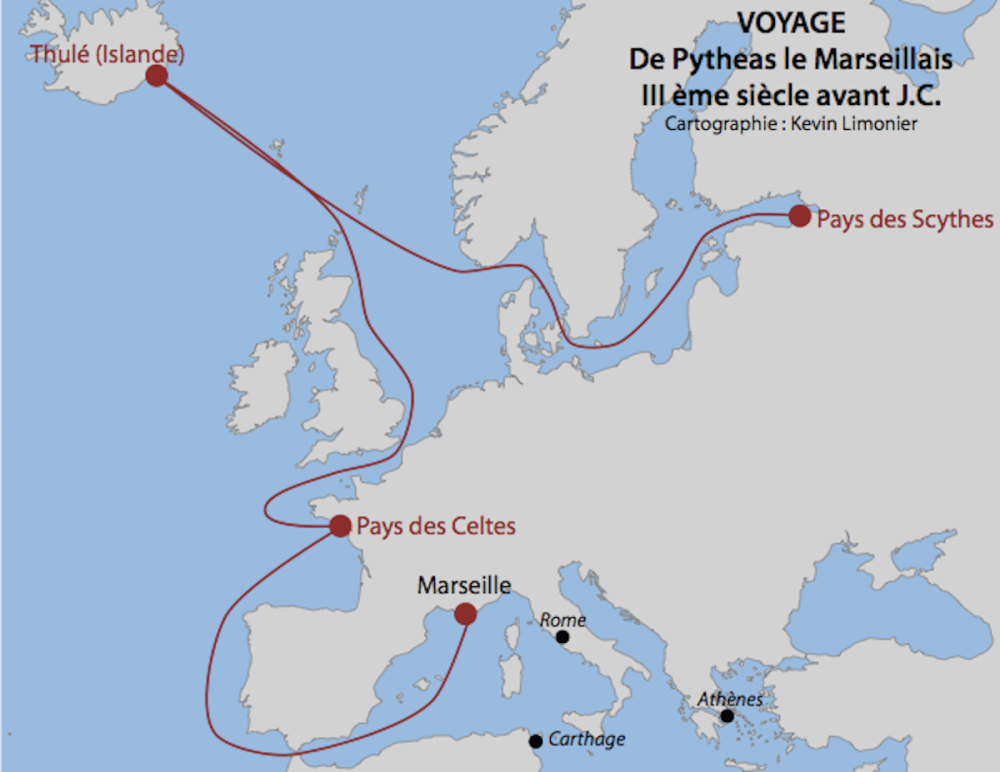
After Thule, Pytheas sailed along the coasts “from Gaderia to Tanais”. He also provides information about Ostiae and the lands beyond the Rhine all the way to Scythia. According to Pliny, on his way to the shores beyond the Rhine, Pytheas also went to an island from which amber was obtained. He says that a Germanic people called the Gutones lived on the banks of the Metudonis Bay. From there it was a day’s journey to Abalus Island where amber was washed up on the shore in spring. The amber originated in the congealed sea. Apparently different sources use different names for the same island. It is possible that Basilia Island was this same Abalus, though it was said to be a three day’s sea voyage from Scythia. In those times Scythia meant that part of Europe east of the Rhine. One form of the island’s name is Balcia, which may allude to the Baltic, in the same way that Ostiae, mentioned earlier, suggests Aesti, the name which Tacitus called the area now known as Estonia.
Based on the vague but unmistakable allusions mentioned above, Professor Gaston E. Broche, in his work Pytheas le Massaliote (1935), concludes that in visiting Thule — a question we leave open for the time being — Pytheas sailed, by way of the Kattegat, to the Baltic Sea and, following the coast, all the way to the Gulf of Riga and the remotest corners of the Bay of Finland. Nansen, however, is of the opinion that this possibly refers to a new voyage that Pytheas made after his journey to Thule.
It is difficult to arrive at a clear picture of Pytheas’ voyages because many people quote from and explain his book but few have actually read it. Pytheas’ most widely quoted critic Strabo, who lived in the first century AD, had not read it but quotes Polybius (200-120 BC), Eratosthenes (275—120 BC), Hipparchus (190—125 BC) and Timaeus (345-260 BC). His most important source seems to have been Polybius, who regarded Pytheas with hostility. Pliny, an important authority, gained some information directly from Pytheas but also refers to Timaeus. Many similar references to Pytheas prove nothing more than a common source, which in all probability did not quote him word for word.
It is the very fact that the information Pytheas gives us conflicts with the general views of his time which proves that he did in fact make his voyages. The biggest question in this regard is: where did he go? To Thule, there is no doubt, but from the point of view of research into exploration the most fascinating questions relate to the location of Thule. There are many alternatives.
